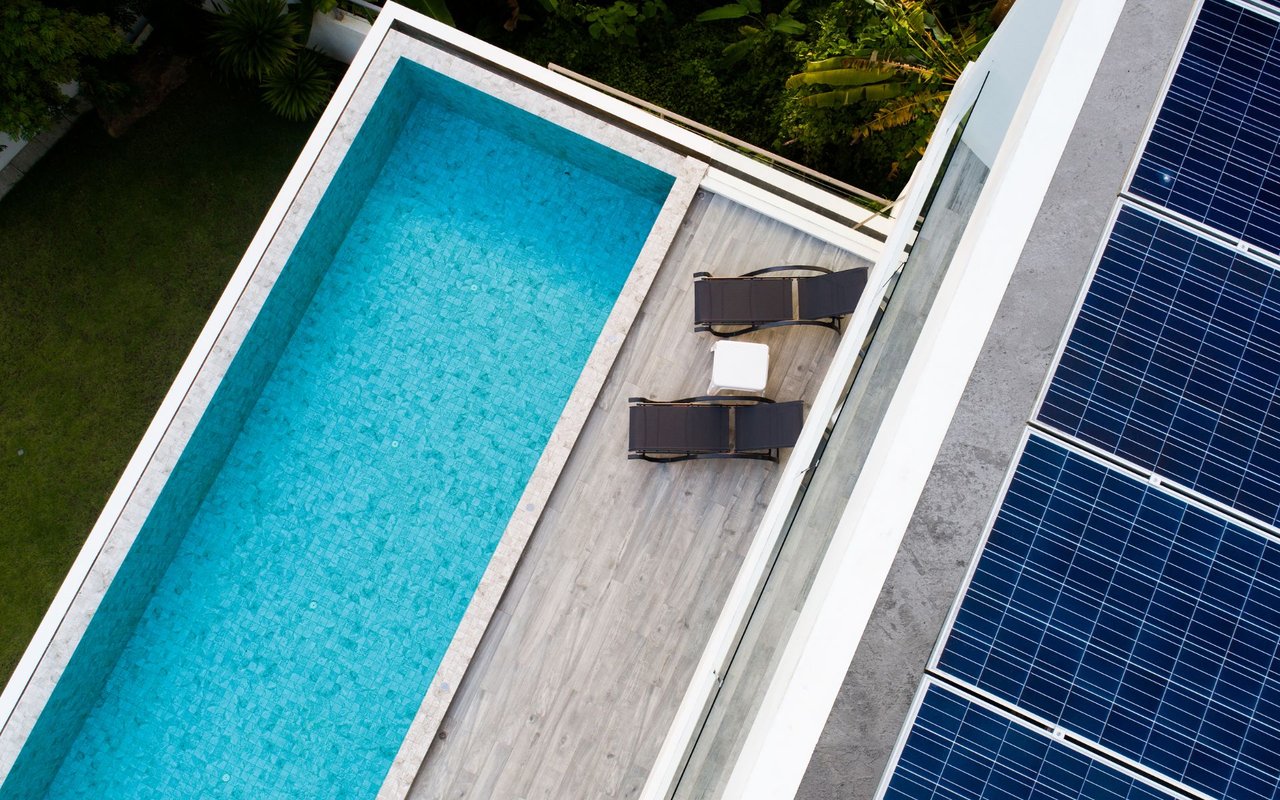Want to Build a Green Home? Here the Green Building Codes You Need to Know
The advantages of sustainable and green homes are getting a lot of press in today’s world. Not only will a green home help you reduce your carbon footprint and reduce the amount of water your home uses, but it can also create a healthier indoor environment for you and your family. If you are ready to either build a green home or undertake an extensive green renovation project on an existing home, knowing the green building standards, codes and certifications will help you measure and determine just how green your home can be. While government regulations have made certain green codes mandatory (such as the minimum energy efficiency rating of certain household appliances), other green certification systems are completely voluntary, allowing homeowners to choose how “green” they want to go. This short article offers a concise summary of the different codes, standards, and certifications that regulate the green building industry. A basic understanding of this world of green building should help see how all the pieces fit together and determine the best strategy to make your green home a reality.
Overview: Building Green
According to the Environmental Protection Agency (EPA), 11% of all greenhouse gas emissions in the United States come from residential and commercial buildings. Another 28% of our emissions stems from the electricity we use in our homes and businesses. Fundamentally changing the way we build the homes we live in, then, offers an unprecedented opportunity to radically cut back on the carbon emissions that are leading to the warming of our planet.
What is a green home?
While there is no single standard that defines what does and does not constitute a green home, there are several features that green homes share.
- Energy Efficiency: Green homes seek to radically reduce the amount of energy that is needed to heat, cool, and power the home. Through weatherizing the home, improving insulation, choosing energy-efficient heating and cooling devices such as heat pumps, opting for energy-efficient appliances and lighting fixtures, and other tasks, the amount of energy the home requires can easily be cut in half.
- Renewable Energy Options: Some green homes also make an effort to produce all or a part of the energy they use by incorporating renewable energy systems such as solar panels or wind turbines.
- Healthy Indoor Air Quality: Green homes also seek to reduce the amount of chemical VOCs (volatile organic compounds) inside the home. Many VOCs are linked to respiratory diseases and even cancer.
- Reduce water usage: Green homes also seek to reduce the amount of water they use through installing low-flow water devices in bathrooms and kitchens. Rainwater catchment systems and greywater recycling systems are also another way to reutilize the water on site.
- Reducing Waste: Lastly, green homes also seek to reduce the amount of waste both during the building of the home and once the home is occupied. Using salvaged materials during construction and sourcing building materials locally are also strategies to reduce the carbon footprint of a home.
What are the benefits of building a green home?
First and foremost, green homes can become a regenerative part of the landscape where they are placed. A home that creates its own energy from the sun shining on its roof and recycles the water from showers, sinks, and washing machines into the landscape through a greywater recycling system will obviously have much less of an environmental impact.
At the same time, green homes offer healthier indoor air quality free of volatile organic compounds (VOCs) and other dangerous chemicals that can lead to serious health problems. Green homes are also more energy efficient, thus helping you save money on your monthly utility bill. Most of the improvements made to green homes will end up paying for themselves over time through increased energy savings.
Lastly, green homes also tend to increase the value of your home. As people become more aware of environmental issues and the need for renewable energy options, green homes will also become in higher demand on the real estate market. In fact, studies have shown that green home features add 8% of added value over conventionally built homes.
The Green Home Codes, Certification & Standards
What are the systems for rating green homes?
Fortunately, you won´t have to “reinvent the wheel” when it comes to finding the best strategies, techniques, and approaches to designing and building a green home. There are several codes, certifications, and standards that have been developed that help and rate the sustainability and environmental impact of green homes.
Green Building Codes:
California Green Building Code: As is often the case, the state of California is leading the way in legislation that mandates green building standards. Perhaps the most impressive piece of recent legislation is a solar power law passed by the California Building Standards Commission that will require all houses built in the state starting in 2020 to include rooftop solar panels. Furthermore, the California Green Building Code includes rigorous energy efficiency standards for all homes that exceed the
federally mandated levels. The Code also includes measures to promote healthy indoor and outdoor air quality.
City Green Building Code (Palo Alto example): Many cities across the nation have set up ambitious carbon reduction plans, and part of these plans include installing green building codes to help reduce greenhouse gas emissions associated with residential buildings. The Palo Alto Green Building initiatives, to name just one example, is focused on reducing energy, water, and natural resource consumption, and improve citizen well-being through improved indoor air quality and comfort. This green building ordinance requires strict compliance, though the city also is open to helping people find rebates and incentives that will help them renovate their home towards green standards.
Project Certifications
LEED: The most well-known, national green building certification is LEED, which stands for Leadership in Energy and Environmental Design. Managed by the United States Green Building Council, the LEED program rates homes on a point system, and offers different levels of certification, with the Platinum rating being the highest. The certification process looks at several different categories, including building design and construction, interior design and construction, building operations and maintenance, and neighborhood development. LEED certification for a home is completely voluntary, though a LEED gold or platinum home will almost certainly reduce your home´s operation costs.
Green Globes: The Green Building Initiative by Green Globes is another voluntary project certification for multi-family green homes and buildings. This certification process is a sure fire way to make sure that your home is built to the highest energy efficiency standards, and will also focus on reducing water consumption inside the home. Third-party assessors are used throughout the certification process and Green Globes offers customized guidance to help homeowners find the best strategies to make their
home as green as possible.
Living Building Challenge: The Living Future Institute has recently created the Living Building Challenge, one of the most challenging and strict green building certification programs on the market. While the Living Building Challenge has several different levels, the Zero Net Energy certification is designed for homes that want to be zero net energy, meaning that they produce as much renewable energy on site as their homes use. Homes can choose to either produce their renewable energy on-site through solar
panels, geothermal energy, or wind turbines, or sign up for an off-site renewable energy program such as Community Solar programs.
Passive House: The Passive House Institute of the United States also offers its own certification program for green homes wanting to live up to the passive house standards. Through an airtight envelope, passive solar design, high-performance insulation, and other sustainable building techniques, passive houses can reduce the building's ecological footprint. This certification program is also voluntary, and it ensures that your home will become ultra-low-energy buildings that, depending on your climate,
might not require any additional energy for space heating or cooling.
Product Certifications
On a smaller level, there are also several product certifications that will help homeowners make educated decisions on what products are the greenest and most sustainable for their home. Most of the certification programs mentioned above will require the products in your house to have these certifications.
- Energy Star: This government program run by the EPA rates a wide range of household appliances and devices to help consumers identify those that offer superior energy efficiency.
- WaterSense: This is another EPA program that rates all water-emitting devices in homes, including showerheads, toilets, faucets, urinals, and valves based on how much water they use. The program seeks to help consumers through labeling the most water-efficient products on the market.
- Forest Stewardship Council: FSC certification seeks to promote the sustainable management of our world´s forest. They research a wide range of forest products and offer certification for wood or lumber products that are managed sustainably and in an eco-friendly manner.
- SCS Global Services: This is another certification agency that focuses on a wide range of products, including carpets, textiles, wood products, and insulation. They offer auditing, certification, testing, and life-cycle assessment to determine which products are the greenest.
- GreenSeal: This certification also covers a wide range of household products, including paints, adhesives, lamps, electric chillers, windows, window films, and occupancy sensors. They base their work on 27 different standards for over 500 commonly used products.
- Cradle to Cradle: This unique product certification help consumers discover what is in their product, what resources were required for it to be built, and if it is possible to recycle or reuse.
- GREENGUARD: This program is specifically focused on rating products based on how they affect indoor air quality. They have a special focus on children and schools.
- Green Squared: Lastly, this certification system is specifically for ceramic and glass tile manufacture and installation.
All in all, there is a lot of information out there on how you can design and build a beautiful, healthy, and environmentally friendly home that will reduce your carbon emissions. You can click on any of the links above to keep reading and learning about the green home standards, codes, and certifications that are available to you.

